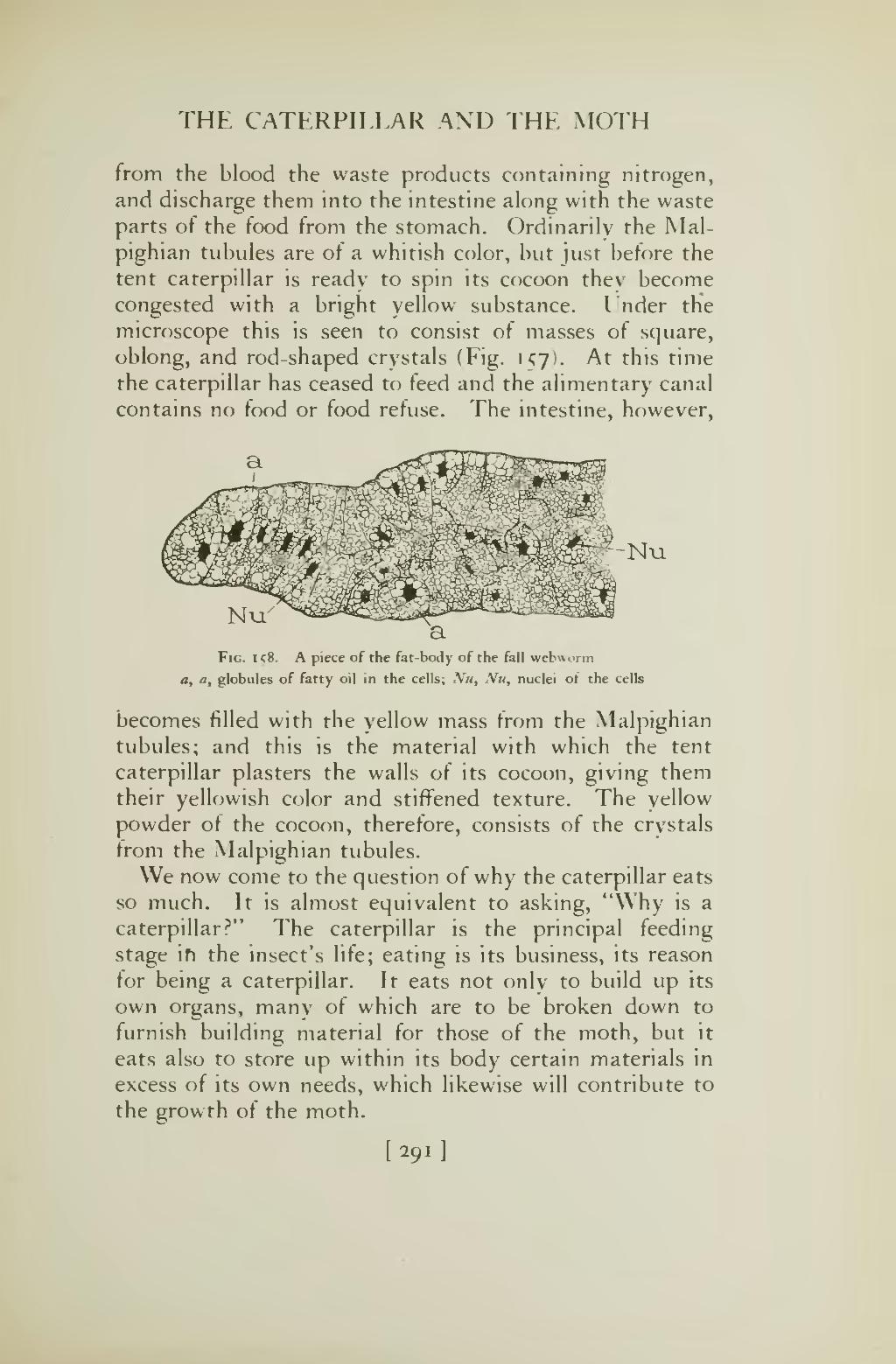THE CATERPILLAR AND THE MOTH
from the blood the waste products containing nitrogen, and discharge them into the intestine along with the waste parts of the food from the stomach. Ordinarily the Malpighian tubules are of a whitish color, but just before the tent caterpillar is ready to spin its cocoon they become congested with a bright yellow substance. Under the microscope this is seen to consist of masses of square, oblong, and rod-shaped crystals (Fig. 157). At this time the caterpillar has ceased to feed and the alimentary canal contains no food or food refuse. The intestine, however,

Fig. 158. A piece of the fat-body of the rail webworm
a, a, globules of fatty oil in the cells; Nu, Nu, nuclei of the cells
becomes filled with the yellow mass from the Malpighian tubules; and this is the material with which the tent caterpillar plasters the walls of its cocoon, giving them their yellowish color and stiffened texture. The yellow powder of the cocoon, therefore, consists of the crystals from the Malpighian tubules.
We now come to the question of why the caterpillar eats so much. It is almost equivalent to asking, "Why is a caterpillar?" The caterpillar is the principal feeding stage in the insect's life; eating is its business, its reason for being a caterpillar. It eats not only to build up its own organs, many of which are to be broken down to furnish building material for those of the moth, but it eats also to store up within its body certain materials in excess of its own needs, which likewise will contribute to the growth of the moth.
[ 291 ]

